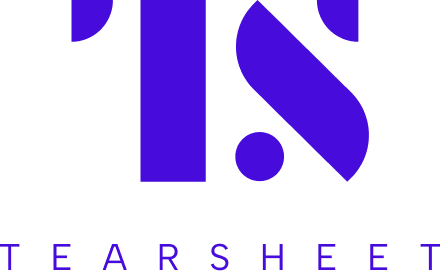Why Brex needed a 3.0 moment — and how the new operating model is less about code and more about vision
- Brex entered its 3.0 phase in 2024, rebuilding its internal structure — reshaping its operating model, execution, and leadership approach.
- We dive into why this pivot was a make-or-break moment for Brex. Over a year into Brex 3.0, its effects are coming into focus — we analyze what’s working and what needs work.

Last year, Brex — born as a scrappy startup with a corporate card for startups that transformed into a global fintech and enterprise SaaS firm in corporate spend — made a bold move: it hit reset. This wasn’t just a tweak but a full-scale overhaul of its operating model, execution, and internal management structure.
But why would a company that became the poster child for hyper-growth — hitting $100 million ARR in 18 months after launching in 2018 — decide it was time to rethink its internal approach?
A run of difficult years
Brex has navigated a series of challenges in recent years, particularly after its 2022 shift to Brex 2.0. The company transitioned from catering to traditional brick-and-mortar SMBs with corporate card needs to building a financial platform to capture the spending of mid-market and enterprise businesses.
This strategic pivot involved rolling out financial software tailored to larger companies but also meant cutting off services for SMBs and small startups. The decision triggered some backlash, with early customers feeling abandoned, and negative press following suit, as critics questioned the shift away from the firm’s original customer base.
Brex later clarified that it is retaining clients with any form of institutional backing, whether from accelerator programs, angel investors, Web 3.0 tokens, or traditional companies that it classifies as midmarket in size.
“We got to a situation where we realized that if we didn’t choose one, we would do a poor job for both [groups of clients]”, Co-founder Henrique Dubugras told CNBC. “So we decided to focus on our core customer, which are the start-ups that are growing.”
This move simultaneously positioned Brex as a competitor to companies like Ramp and traditional corporate card providers.
Additional challenges at the time included:
– Growth, whether rapid or sluggish, comes with a cost: Brex’s rapid expansion led to internal, operational inefficiencies and overcomplicated management structures. “Being in a period of hyper-growth and rapid success can mask areas needing improvement,” says Brex’s new President and CFO, Benjamin Gammell.
“Unlike financial struggles or slow growth, where longevity is the goal, hyper-growth requires striking a balance between scaling and execution,” Gammell adds.
– Economic slowdown took a toll: Climbing interest rates and dwindling VC funding in 2023 pushed companies to rethink costs and revenue sustainability:
i) Stagnant revenue growth: Following an early surge in 2023 after the SVB collapse, Brex’s annualized net revenue plateaued at approximately $279 million in the fourth quarter of 2023, signaling a slowdown in growth. Despite a 32% increase year-over-year, the majority of that growth occurred in the first quarter.

ii) High cash burn rate: The company experienced a significant cash burn, averaging about $17 million per month in the fourth quarter of 2023. To address these issues, Brex laid off 20% of its workforce in January 2024.
Strengthening the company’s focus required a leaner management structure, breaking down silos across design, product, engineering, sales, and marketing teams to boost collaboration, quality, and speed across the organization.
Brex 3.0 emerged as a response and was “driven by the need to improve operational discipline across sales and product development, increase profitability, address our burn rate, and expand our ability to effectively serve enterprise companies with nuanced needs and expectations,” Gammell shares.
Enter Brex 3.0
“Brex’s new operating model, Brex 3.0, is a complete reinvention of how we work,” says Gammell.
He outlines Brex 3.0 through three core pillars:
1. Flattening the organization: Brex 3.0 ushered in the largest leadership change in the company’s history. It removed two layers of management to ensure leaders are hands-on builders who “operate at all levels”. The company also promoted internally across key departments — Engineering, Design, Finance, Operations, and Legal — to reconnect leaders with their craft.
Gammell points to Chief Technology Officer James Reggio as an example; while overseeing the firm’s tech stack and AI team at the executive level, he remains in the weeds with the department, writing and developing tools that help Brex’s engineers improve the product suite daily.
2. Creating ONE clear roadmap: Brex established a new, single roadmap strategy for the entire company to prioritize the most impactful initiatives within its core corporate credit card business and raise the bar for how it builds products. This shift led the firm to launch major product advancements in banking, embedded finance, business travel, spend management, and accounting workflows over the past year.
3. Building less to build better: Since its shift to Brex 3.0 in January 2024, the company has prioritized depth over breadth, enabling it to roll out three major releases, launch four new products, and establish key partnerships with Stripe and Navan.
“Because we now build fewer things per release, we can afford to spend more time designing each product surface, which is the only way to build high-quality software,” says Gammell.
Strategy over software: Company revamps often center on tech upgrades, but Brex’s 3.0 transformation followed a different path.
According to Gammell, it wasn’t about the tech — it was about something bigger.
“The Brex 3.0 vision was less about technological upgrades and more about refocusing the approach to leadership, product, and go-to-market strategies,” he says. “We already had the tech infrastructure to operate under this new model, but what we did double down on was our unique advantage of owning the entirety of our financial tech stack.”
What delivered results and what’s still on the drawing board: Over a year into Brex 3.0, the impact is coming into focus — what’s driving real results, and what’s still being fine-tuned?
Gammell asserts that the new way of working has improved business performance, reflected in the growth figures comparing the three months ending January 31, 2025, to the same period in 2024. With net revenue retention up 15+ points, revenue growth nearly tripled year over year. Cash burn fell by 82%, extending the company’s runway to 10 years.
“The first year we expect to become cash flow positive is 2025,” Gammell says.
i) The standout aspect: Brex 3.0’s key highlight has been the scaling of its enterprise business.
“The enterprise business, to date, has grown 80%, with net revenue retention above 130% YoY as we onboarded marquee clients like Anthropic, Arm, Robinhood, ServiceTitan, Sonos, and Wiz,” Gammell notes.
ii) Work in progress: Like many fintechs, Brex once prioritized rapid expansion. But after re-evaluating its long-term trajectory, the company saw the need to break away from the grow at all costs mentality in favor of a more measured, sustainable strategy.
However, to truly differentiate itself in the crowded spend management market, Gammell believes Brex needs to double down on its operational discipline and maintain a focus on delivering top-tier products as it continues to scale.
“Moving forward, we’re treating growth like a marathon, not a sprint, shifting our focus to how we serve customers, starting from within,” Gammell notes. “This transformation has positioned us as the only player that can credibly serve companies from every stage, from founders starting out to the trillion-dollar companies.”
The IPO Question: What’s driving the decision
As Brex broadens its footprint among more pre-IPO and public companies, speculation swirls about whether it will join their ranks.
“We see becoming a public company as an important step for our business, but rather than checking it off our to-do list, it is a step that we’ll take when we’re ready,” answers Gammell.
“The road to an IPO can make or break a company’s big splash; so for now, our focus is on ensuring that we have a predictable and stable business model before taking that step.”
As Brex evaluates its IPO prospects, Gammell notes that the company must first find answers to questions like:
- Have we diversified our business enough? Gammell believes diversification is key to ensuring the firm can accurately forecast its business performance long-term. For Brex, that means reaching a size and scale where its customer base is well-diversified across size – from startups to enterprises – industries, and geographies.
- Is the timing right? For any fintech eyeing an IPO, the focus should be on timing. “For Brex, we’ll want to be operating at peak operational efficiency and be able to set a growth trajectory that positions us for long-term success in the public markets,” explains Gammell.
- What needs are we looking to solve? The ultimate goal must be clear — why pursue an IPO? Whether it’s for capital access, liquidity, or elevating brand recognition as a generational fintech company, the purpose should be well-defined. “If we don’t have an immediate need, we’ll keep choosing to remain private until the economics of an IPO make strategic sense,” Gammell notes.
Where the journey leads next?
Discussing Brex’s priorities for this year and beyond, Gammell says Brex is focused on building off of 2024’s momentum — driving growth, achieving cash flow positivity, and pushing the boundaries of product quality and innovation, while scaling customer acquisition.
Beyond technical advancements, the biggest transformation for Brex has been cultural. So, cultural synergy is now more important than ever.
“As we set out to rebuild our business, we’re pursuing a culture of people willing to go the extra mile to create a generational company — true builders!” Gammell says.
“The transformation from effortless growth to re-establishing momentum wasn’t easy, but it was necessary. Taking the hard path and leaning into what made Brex great when we first set out, is setting us up to reach our full potential.”


